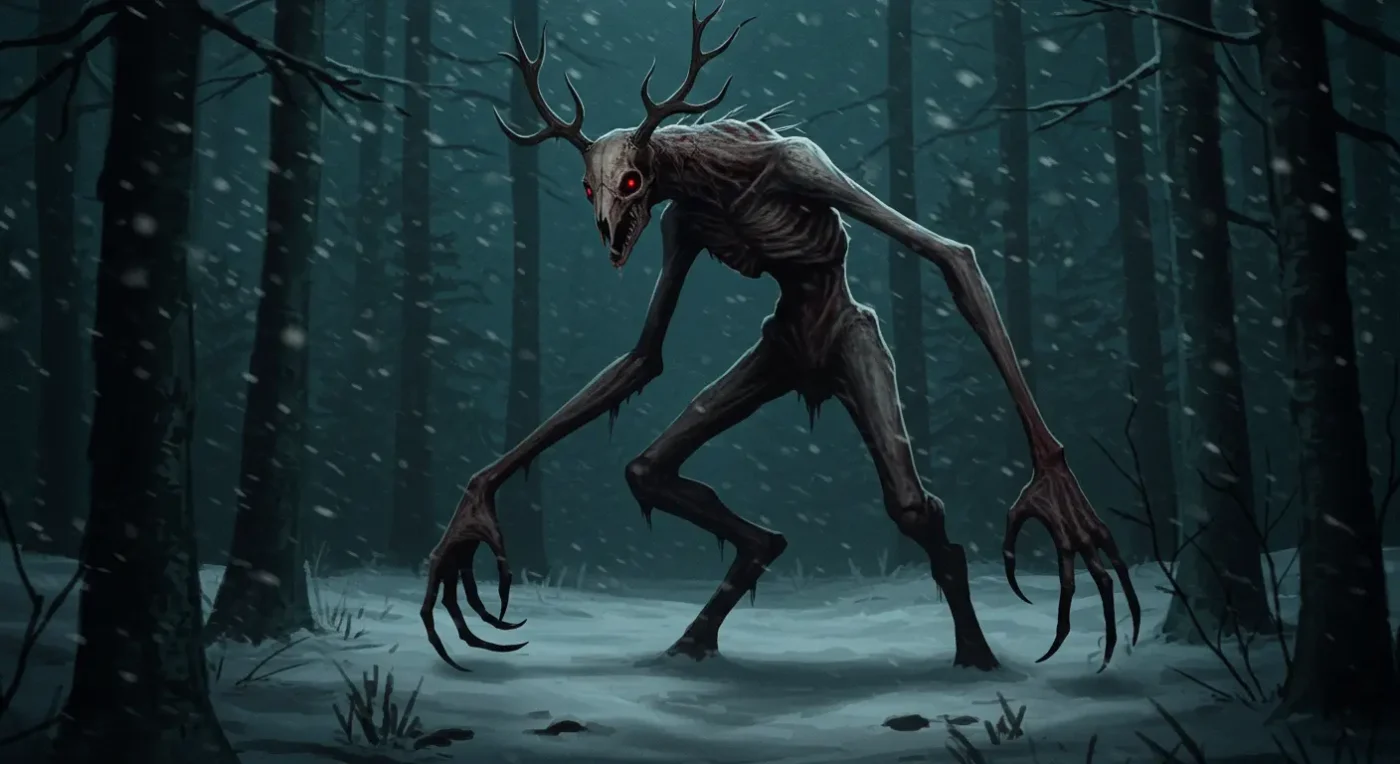Cryptid Files
The Wendigo: The Chilling Legend That Haunts the Forests
Introduction: What Is a Wendigo?
The Wendigo is one of the most terrifying cryptids in North American folklore — a supernatural creature born from the myths of Indigenous Algonquian tribes. Said to be a malevolent spirit associated with cold, isolation, and insatiable hunger, the Wendigo is often described as gaunt, skeletal, and cannibalistic, with glowing eyes and a chilling howl that echoes through the woods.
Whether you’re a horror fan or a folklore geek, our Wendigo gifts for believers are perfect for those who appreciate the darker side of mythology.
The Origins of the Wendigo Myth
Indigenous Roots
The legend of the Wendigo originates from Algonquian-speaking peoples, including the Cree, Ojibwe, and Innu. In these cultures, the Wendigo symbolizes greed, selfishness, and the dangers of isolation in harsh winters. It was said to possess people who engaged in cannibalism, turning them into monsters with an endless appetite for human flesh.
This myth wasn’t just horror — it was a social warning. During times of famine, the story of the Wendigo served as a moral reminder of what could happen when survival crossed into savagery.
Read more about the cultural origins
What Does a Wendigo Look Like?
Descriptions vary, but common traits include:
- Emaciated body, often with exposed bones
- Antlers or deer skull head in modern pop culture versions
- Eyes glowing in the dark
- Foul odor and unearthly screeches
Unlike other cryptids, the Wendigo is not just a creature — it’s a cursed transformation. Some say it was once human, now warped by hunger and evil.
Wendigo Psychosis: When Myth Meets Mental Illness
In the 1800s and early 1900s, anthropologists recorded rare cases of what they called “Wendigo psychosis” — a condition where individuals believed they were becoming Wendigos and developed cravings for human flesh. Though debated by modern psychologists, it adds a chilling psychological layer to the legend.
One of the most infamous cases involved a Cree man named Swift Runner, who was executed in 1879 for killing and eating his family. He claimed he was possessed by a Wendigo spirit.
Wendigo in Pop Culture
Horror and Media Appearances
The Wendigo has become a horror staple in modern media. It appears in TV shows like Supernatural, Hannibal, and Teen Wolf, as well as games like Until Dawn and The Quarry.
Hollywood often depicts the Wendigo with antlers and animalistic features — a design that blends Native mythology with gothic horror imagery.
Symbolism in Modern Culture
Beyond horror, the Wendigo is often used to represent addiction, greed, or moral corruption — a monster not just of the body, but of the soul.
The Perfect Gifts for Wendigo Enthusiasts
If you enjoy chilling stories and haunted forests, our Wendigo merchandise are sure to feed your dark side.
Top Gift Ideas:
- Art prints of skeletal, forest-dwelling Wendigos
- Horror-themed hoodies and shirts
- Creepy mugs and collectible pins
Conclusion: The Monster Within
The Wendigo isn’t just a scary story — it’s a reflection of what happens when humanity is lost to desperation and darkness. Whether it’s myth, mental illness, or metaphor, the Wendigo endures because it taps into a primal fear: that the real monsters might be us.
So next time you hear a branch snap deep in the woods, ask yourself — is it just the wind, or something hungry?
The legend of the Wendigo is just one chapter in the world’s great book of mysteries. Your expedition has only just begun. Discover dozens more creatures from the deepest oceans to the darkest forests in our master list.
Continue your journey here: A Cryptozoologist’s Field Guide: The A-Z of 50+ Legendary Cryptids
Stay aware. Stay warm. Stay human.

